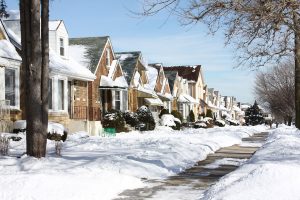
Image via City Journal
I was pleased to recently get to attend a conference about America’s middle neighborhoods hosted by the American Assembly and the Richmond Fed. They are looking at the fate of America’s in-between urban neighborhoods, ones neither poor nor rich. These former urban bulwarks have been increasingly tipping towards decline.
I discuss this in my latest piece over at City Journal:
One of the culprits here is sprawl. In slow-growing regions where new home construction exceeds household growth, new homes put downward pressure on the price of existing homes. Those who can afford the newer, less centrally located homes move, reducing the price of comparable housing in older neighborhoods, leading poorer people to move into these older neighborhoods. This process is called filtering, and it can be a healthy, renewing process in a vibrant local economy. But in stagnant areas, filtering leads to the hollowing-out of the oldest housing stock and ultimately to distressed, abandoned neighborhoods.
For example, Buffalo built nearly 60,000 new homes between 1980 and 2011, even as the area population was shrinking. The Cleveland area continues to build new suburban developments, as its regional population shrinks. This expansion of construction amid economic stagnation is a recipe for distress for older middle neighborhoods.
Another source of stress is demographic change. Many middle neighborhoods contain a monolithic housing stock predating 1960. They were built for the postwar traditional nuclear family. That family structure is in decline, and today’s traditional family often prefers different housing types. As Allan Mallach noted in On the Edge: America’s Middle Neighborhoods, “Many of these neighborhoods are now facing a demographic trap: the demographic for which they were designed and which sustained them for most of the past century has declined drastically as a share of the urban population and no new source of demand capable of sustaining these areas has emerged.”
Click through to read the whole thing.
from Aaron M. Renn
http://www.urbanophile.com/2018/01/10/americas-urban-middle-neighborhoods/
No comments:
Post a Comment